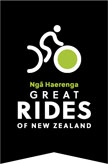Motueka Awa Story
Traditionally, the Motueka River was an important food source for the tribes who lived there. The water channels, swamps and wooded areas associated with the awa (river) were habitats supporting a huge food basket. Oral traditions identify the awa and its flood plain as an extensive and bountiful mahinga kai from which a huge variety of natural resources and food were gathered. Floods would replenish and fertilise the catchment, enabling iwi (tribes) to cultivate food on the plains. At the mouth of the awa was an important area for the harvesting of pīngao (native sedge) for traditional weaving.
The awa and its tributaries were full of tuna (eels), kōkopu and īnanga (whitebait). The Motueka headwaters can be linked to the legend of Ngahue and Poutini. This pūrākau (story) is significant as it illustrates that from the very earliest times, tribes from all over the country knew of the precious resources to be found in Te Tauihu (the top of the South Island). Ngahue was the atua (guardian) of pounamu (greenstone). He and his taniwha (mythical creature, guardian) Poutini were the guardians of this taonga. A dispute between the taniwha of Ngahue and his adversary Hine-tūāhōanga ensued. Poutini was driven out of Hawaiki by Whatipū (Hine-tūāhōanga’s taniwha) and pursued to different places around Aotearoa. One place Poutini found temporary refuge was at the eastern headwaters of the Motueka River. Pounamu is still found in parts of the Motueka River today.
The upper Motueka River valley also hosts clusters of pakohe (argillite) working areas and source sites. This was another important resource for tūpuna (ancestors) who lived in the area. There are many buried boulders, hammer stones and adzes found in the river valley which illustrate the use of pakohe and traditional stone working techniques.
The Motueka River valley provided a natural inland ara (pathway) to reach Te Tai Poutini (the west coast). This pathway was a traditional greenstone trail, in search of this valuable taonga (treasure) and other items for trade. The route followed the Motueka River valley before connecting with the Wairau and Waimea / Wai-iti routes, ahead of Lakes Rotoiti and Rotoroa. Waka (canoes) were used to negotiate the waterways. The awa has many traditional tauranga waka (landing sites) and camp sites, which were used for fishing along its banks.
We continue to recognise the importance of the Motueka River today and its continued significance as an ongoing food source. As kaitiaki (guardians), we exercise this responsibility through ensuring the river and its tributaries are protected now and into the future.
Our values are based on:
Whakapapa – Identity and connection to the awa
Mahinga Kai – Whānau knowledge and values associated with customary food gathering practices.
Manaakitanga – Hospitality and respect
Kaitiakitanga - Responsibility to protect the environment
Thank you to Ngati Tama in consultation with Ngati Rarua and Te Atiawa for providing this text for us.






